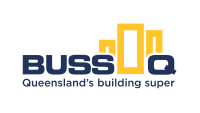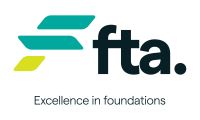3 April 2023
On 1 April 2023 the new Managing the risk of psychosocial hazards at work Code of Practice commenced.
The code has been developed to provide practical information on how psychosocial hazards and risks at work can be managed. Now that the code is in place, organisations will need to implement measures to ensure that their work is not exposing workers to potential harm.
Need help? We've compiled a list of services that can assist in mental health and psychosocial hazards at work
What are psychosocial hazards?
Psychosocial hazards are anything at work that may cause psychological or physical harm.
These stem from:
- the way the tasks or job are designed, organised, managed and supervised
- tasks or jobs where there are inherent psychosocial hazards and risks
- the equipment, working environment or requirements to undertake duties in physically hazardous environments, and
- social factors at work, workplace relationships and social interactions.
Psychosocial hazards are anything in the design or management of work that increases the risk of psychological or physical harm. Examples include:
- High and/or low job demands - A job can involve a combination of high and/or low physical, mental and emotional demands, which can create risks to the health and safety of workers.
- Low job control - Work where workers have little or no control over what happens in their work environment, how or when their work is done, or the objectives they work towards.
- Poor support - Tasks or jobs where workers have inadequate emotional and/or practical support from their supervisors and/or co-workers, inadequate training or information to support their work performance, or inadequate tools, equipment or resources to do their job.
- Low role clarity - Jobs where there is uncertainty about, or frequent changes to tasks and work standards; where important task information is not available to workers; or where there are conflicting job roles, responsibilities or expectations.
- Poor organisational change management - Organisational change management that is poorly planned, communicated, supported or managed.
- Low reward and recognition - Work where there is an imbalance between workers’ efforts and recognition or rewards they receive in return – both formal and informal.
- Poor organisational justice - Work where there is a lack of procedural fairness (fair processes to reach decisions), informational fairness (keeping relevant people informed), or interpersonal fairness (treating people with dignity and respect).
- Poor workplace relationships or interpersonal conflict - Can occur between managers, supervisors, co-workers or others with whom workers are required to interact. It can appear as frequent or excessive disagreements, or rude comments—either from one person to another or between multiple people.
- Remote or isolated work - Work that is isolated from the assistance of other people because of location, time, or the nature of the work. It can involve working in locations where there is difficulty in immediate rescue or attendance of emergency services (where required).
- Poor environmental conditions - Those where workers are exposed to unpleasant, poor quality, or hazardous physical environments or conditions that create a stress response.
- Traumatic events - Workers may be exposed to this hazard at work through investigating, witnessing, or being directly exposed to traumatic events or situations. This may include reading, hearing or seeing accounts of traumatic events. A person is more likely to experience an event as traumatic when it is unexpected, is perceived as uncontrollable, where there is a threat to life or safety or where it is the result of intentional cruelty.
- Violence and/or aggression
- Bullying - Work-related bullying in your place of work can affect your workers’ psychological and physical health and must be managed.
- Harassment including sexual harassment - Harassment includes offensive remarks or behaviour directed towards a worker or group of workers in relation to personal characteristics such as age, disability, race, sex, relationship status, family responsibilities, sexual orientation, gender identity, or intersex status.
- Fatigue - At work, fatigue is a state of mental and/or physical exhaustion that reduces your ability to work safely and effectively.
For employers
What does the Code and Regulations mean for PCBUs?
Persons conducting a business or undertaking (PCBUs) have a duty to ensure, so far as is reasonably practicable, the health and safety of each worker while at work. Health includes physical and psychological health.
This means that PCBUs must ensure that psychosocial hazards at work are effectively managed.
The PCBU’s duty to workers includes ensuring the health and safety of workers from harmful acts from third parties, such as clients, visitors, or patients.
Examples of what the PCBU is required to do to manage psychosocial hazards include ensuring they provide and maintain:
- a safe working environment
- safe systems of work
- safe use, handling, and storage of equipment, structures and substances
- adequate facilities at work
- necessary information, training, instruction or supervision of workers, and
- conditions at the workplace are monitored to ensure any risks remain adequately controlled.
What do PCBUs need to do to comply with the Code?
PCBUs must adopt a risk management process, including eliminating psychosocial risks, so far as is reasonably practicable, or if it is not reasonably practicable to eliminate psychosocial risks, by minimising them.
PCBUs should follow a four-step risk management process to meet their health and safety obligations under the Code and Regulations:
- Identify psychosocial hazards
- Assess the risk
- Control the risks
- Review the controls.
Part 3 of the Code provides detailed information about these steps for psychosocial hazards.
Need more info?
We've got your back! Check out our Managing Psychosocial Hazards at Work training course.





